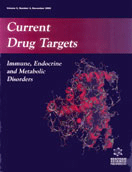Abstract
Because of a characteristic aroma and health benefits, green tea is consumed worldwide as a popular beverage. The epicatechin derivatives, commonly called polyphenols, present in green tea possess antioxidant, anti-inflammatory and anticarcinogenic properties. The major and most highly chemopreventive constituent in green tea responsible for the biochemical or pharmacological effects is (-)- epigallocatechin-3-gallate (EGCG). Epidemiological, clinical and biological studies have implicated that solar ultraviolet (UV) light is a complete carcinogen and repeated exposure can lead to the development of various skin disorders including melanoma and nonmelanoma skin cancers. We and others have shown that topical treatment or oral consumption of green tea polyphenols (GTP) inhibit chemical carcinogen- or UV radiation-induced skin carcinogenesis in different laboratory animal models. Topical treatment of GTP and EGCG or oral consumption of GTP resulted in prevention of UVB-induced inflammatory responses, immunosuppression and oxidative stress, which are the biomarkers of several skin disease states. Topical application of GTP and EGCG prior to exposure of UVB protects against UVB-induced local as well as systemic immune suppression in laboratory animals, which was associated with the inhibition of UVB-induced infiltration of inflammatory leukocytes. Prevention of UVB-induced suppression of immune responses by EGCG was also associated with the reduction in immunosuppressive cytokine interleukin (IL)-10 production at UV irradiated skin and draining lymph nodes, whereas IL-12 production was significantly enhanced in draining lymph nodes. Antioxidant and anti-inflammatory effects of green tea were also observed in human skin. Treatment of EGCG to human skin resulted in the inhibition of UVB-induced erythema, oxidative stress and infiltration of inflammatory leukocytes. We also showed that treatment of GTP to human skin prevents UVB-induced cyclobutane pyrimidine dimers formation, which are considered to be mediators of UVB-induced immune suppression and skin cancer induction. The in vitro and in vivo animal and human studies suggest that green tea polyphenols are photoprotective in nature, and can be used as pharmacological agents for the prevention of solar UVB light-induced skin disorders including photoaging, melanoma and nonmelanoma skin cancers after more clinical trials in humans.
Keywords: antioxidant, green tea, interleukins, cyclobutane pyrimidine dimers, photoprotection, oxidative stress, ultraviolet light
 1
1


















